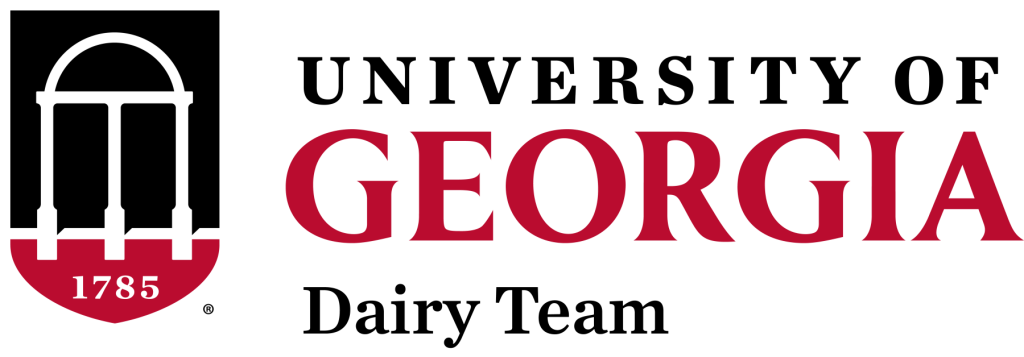I have been cleaning out my office. I found an Atlanta Dairies mini- milk carton filled with matches which was a table souvenir at a 1970’s Georgia Milk Producers meeting. In the 1970’s and 80’s Georgia Milk Producers met in early January when the state legislature opened. One of the first events was the dinner for the meeting. Usual the Governor, US Senators and Representatives and most of the state legislatures would attend.
Atlanta Dairies was the largest milk processor in Georgia and distributed milk in the Southeast. With the announcement of the new Walmart processing, I thought about the formation of Atlanta Dairies and how it changed the dairy industry at the time.
To look at the start of Atlanta Dairies. We need to look at the history of pasteurization of milk. In the 1870’s Louis Pasteur demonstrated that heating milk would destroy the disease-causing bacteria in milk. Milk can be a carrier for tuberculosis, diphtheria, typhoid, unguent fever, scarlet fever, cholera, Salmonella, E. coli, and Listeria. Pasteurization was not readily accepted for milk. Part of the debate was the process, the cost and whether it was effective. (Actually, this debate continues today).
Nathan Straus was a co-owner of Macy’s in New York City. During the 1890’s depression, he started distribution centers for food for the poor living in the tenements of the city. The health concerns were severe. Infant mortality was 25%. As part of his centers, he set up a pasteurization lab for milk and distributed milk for infants. This was a significant outlay of funds as pasteurized milk cost twice as much as raw milk. Within two years the infant mortality rate had dropped to 1%. This led other cities to consider pasteurized milk laws for the sale of milk. In 1924 the Standardized Milk Ordinance was passed. Grade A milk that was shipped interstate was required to be pasteurized. This act celebrates its 100-year anniversary this year. The Pasteurized Milk Ordinance (PMO) today mandates that all milk shipped interstate must be pasteurized.
Interestingly, Nathan Straus has a Georgia connection. The family emigrated from Germany in 1854 and ended up in Talbotton, Georgia. The family had a general mercantile store that serviced the surrounding area. After the civil war with the economy ruined the family moved to New York City. They opened a ceramic department in Macy’s and eventually Nathan and his brother became partners in Macy’s.
In the 1920’ and 30’s most of the milk sold in Georgia was raw milk. Typically, it was processed on the farm and distributed by the dairyman to his customers. There were over 500 dairyman distributing their product to the residents of Atlanta. With the onset of WWII, there was an increased interest in the health aspect of milk. With the outbreak of war, materials were rationed including gas, sugar, meat, trucks, tires and construction material. In 1940, the city of Atlanta adopted the Standard Milk Ordnance as the first step in improving the quality of milk being distributed. Because of the war, material for pasteurizers was in short supply. Farmers could either stop producing milk, put in a pasteurizer on the farm or form a cooperative to process their milk. By 1942 there were only 200 dairy producers in the Atlanta market. A few of the larger producers had put pasteurizers on the farm. Also a few pasteurizers had been set up to process the milk of a few dairies. At this time, discussions were started to form a Cooperative to process milk. Wells Cooperative and Athens Cooperative were the only milk cooperatives operating at this time. Meetings were held and it was decided that 30 members were needed to start the cooperative. There was a lot of interest, but it was difficult to get the financial commitment to form the cooperative. Initially to be a member, a producer had to purchase shares at $50 per share based on $25 per cow to a maximum of $1500. In 1943, the cooperative had enough members and was incorporated as Atlanta Dairies Cooperative. Members had to sign an agreement to allocate all of their milk to Atlanta Dairies.
With the common stock and loans, the cooperative purchased land, equipment and built a plant that begin operating on July 26, 1945. Because of the war, trucks could not be purchased and the members’ rolling stock was used to haul milk and product. After the war, new equipment was added, and the plant was expanded
Over the years, producers were added which resulted in excess milk that was converted into products other than fluid milk. In the 60’ and 70’, Atlanta Dairies purchased and merged with several smaller processing plants and cooperatives. These included Carrol Creamery, Green Meadows Farm, Eatonton Cooperative Creamery and A. G. Dairies. In 1973 a cheddar cheese plant was built in Carrolton.
Atlanta Dairies Cooperative was the largest milk processor in Georgia for over 50 years. In the 1990’s, it was sold and continued to produce dairy products for the Southeast. Eventually the plant became a desirable location in South Atlanta. Like the cotton mills and the meat packing plant the area has been developed as a multiuse project of business and housing. In 2018 the Atlanta Dairies name was revived and is producing Banner Butter.
